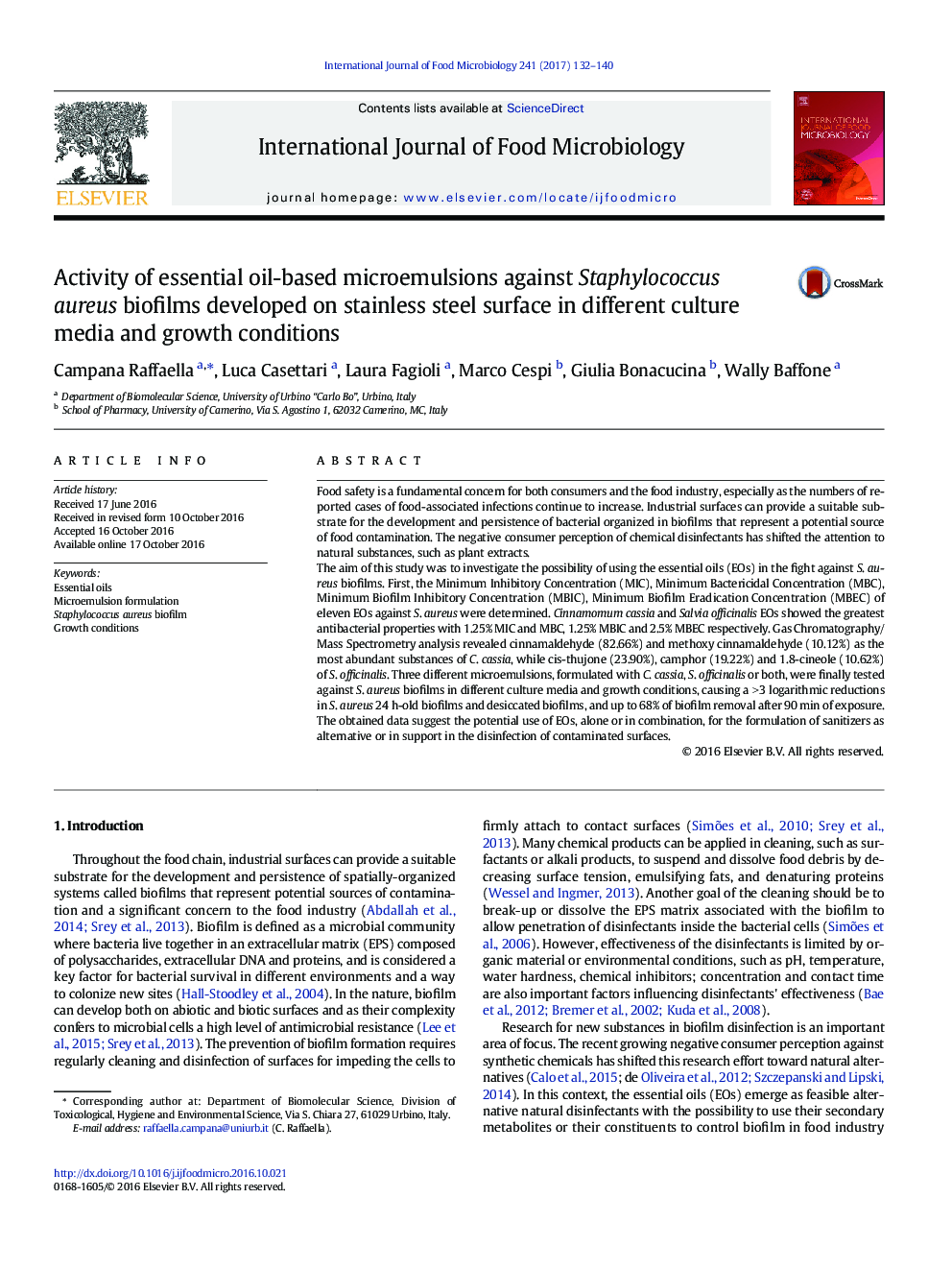| کد مقاله | کد نشریه | سال انتشار | مقاله انگلیسی | نسخه تمام متن |
|---|---|---|---|---|
| 6289658 | 1616542 | 2017 | 9 صفحه PDF | دانلود رایگان |
- S. aureus biofilm development on food contact surfaces in different culture conditions
- Microemulsion as formulation to prepare natural sanitizers EOs-based
- EOs-based microemulsions have potential to control S. aureus biofilm in food industry.
Food safety is a fundamental concern for both consumers and the food industry, especially as the numbers of reported cases of food-associated infections continue to increase. Industrial surfaces can provide a suitable substrate for the development and persistence of bacterial organized in biofilms that represent a potential source of food contamination. The negative consumer perception of chemical disinfectants has shifted the attention to natural substances, such as plant extracts.The aim of this study was to investigate the possibility of using the essential oils (EOs) in the fight against S. aureus biofilms. First, the Minimum Inhibitory Concentration (MIC), Minimum Bactericidal Concentration (MBC), Minimum Biofilm Inhibitory Concentration (MBIC), Minimum Biofilm Eradication Concentration (MBEC) of eleven EOs against S. aureus were determined. Cinnamomum cassia and Salvia officinalis EOs showed the greatest antibacterial properties with 1.25% MIC and MBC, 1.25% MBIC and 2.5% MBEC respectively. Gas Chromatography/Mass Spectrometry analysis revealed cinnamaldehyde (82.66%) and methoxy cinnamaldehyde (10.12%) as the most abundant substances of C. cassia, while cis-thujone (23.90%), camphor (19.22%) and 1.8-cineole (10.62%) of S. officinalis. Three different microemulsions, formulated with C. cassia, S. officinalis or both, were finally tested against S. aureus biofilms in different culture media and growth conditions, causing a >Â 3 logarithmic reductions in S. aureus 24Â h-old biofilms and desiccated biofilms, and up to 68% of biofilm removal after 90Â min of exposure. The obtained data suggest the potential use of EOs, alone or in combination, for the formulation of sanitizers as alternative or in support in the disinfection of contaminated surfaces.
Journal: International Journal of Food Microbiology - Volume 241, 16 January 2017, Pages 132-140
